Search for articles, topics or more
browse by topics

Search for articles, topics or more

Interior space does not have a monopoly on rooms. The citizens of Pompeii sat on stone benches in shady gardens. Traditional Japanese houses have sliding walls to allow easy access to air. Modernist monuments from Fallingwater to the Barcelona Pavilion cultivate a porousness between inside and out, while the more humble suburban developments of 1950s America came with patios attached.
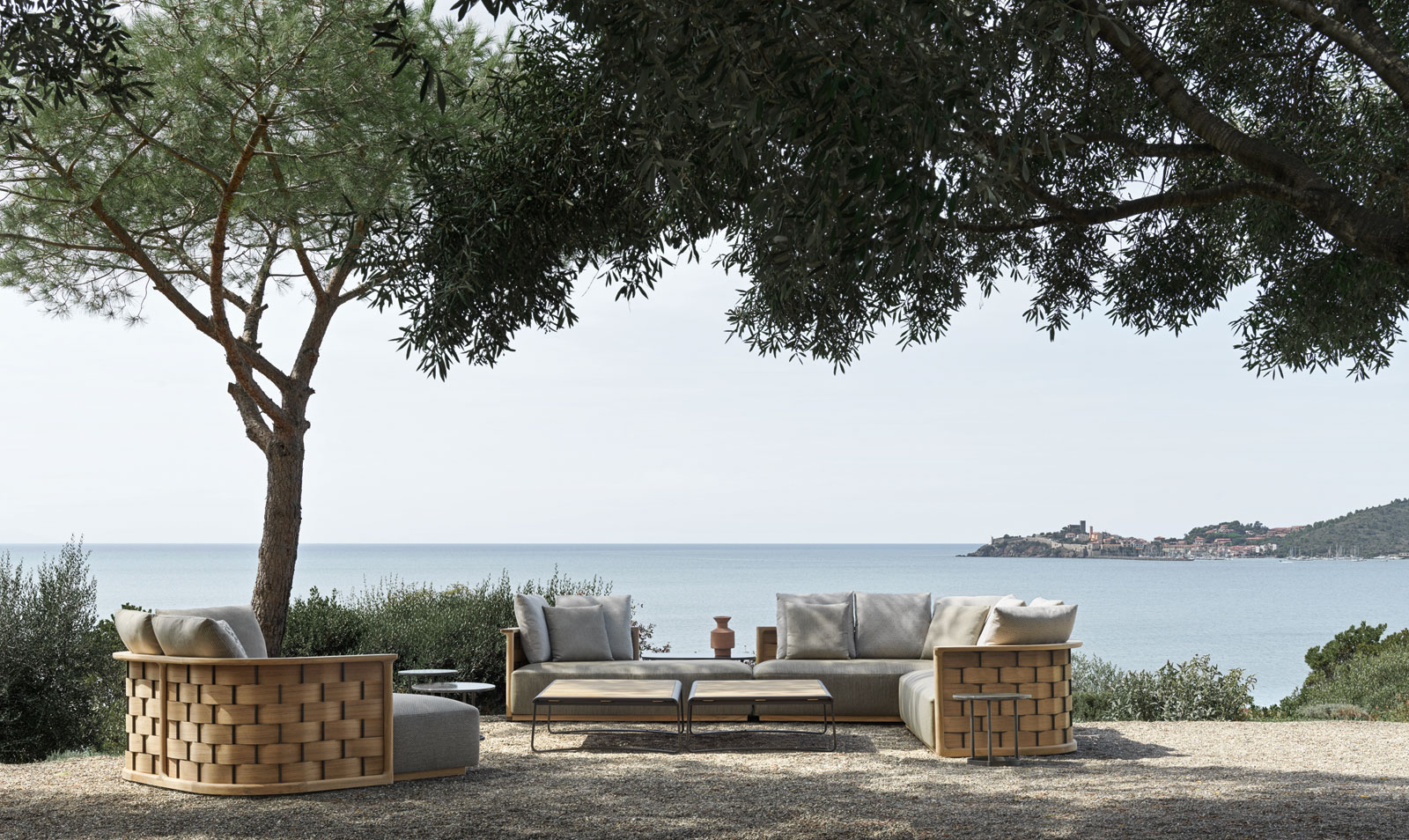 Villa Talamo, Talamone Molteni&C Outdoor Collection – PH Max Zambelli
Villa Talamo, Talamone Molteni&C Outdoor Collection – PH Max Zambelli
Yet although the built environment abounds with gardens, courtyards, terraces, balconies, verandas, porches and patios, furniture designed for the outdoors has often been regarded as secondary to its indoor brethren.
This, however, is poised to change. Recent global events have seen many people newly realise the pleasure of outdoor living and the importance of treasuring the natural world. Moving lockstep with this change, Molteni&C has launched its first ever collections of furniture specifically designed for outdoor rooms.
 Palinfrasca Sofa | Design Vincent Van Duysen
Palinfrasca Sofa | Design Vincent Van Duysen
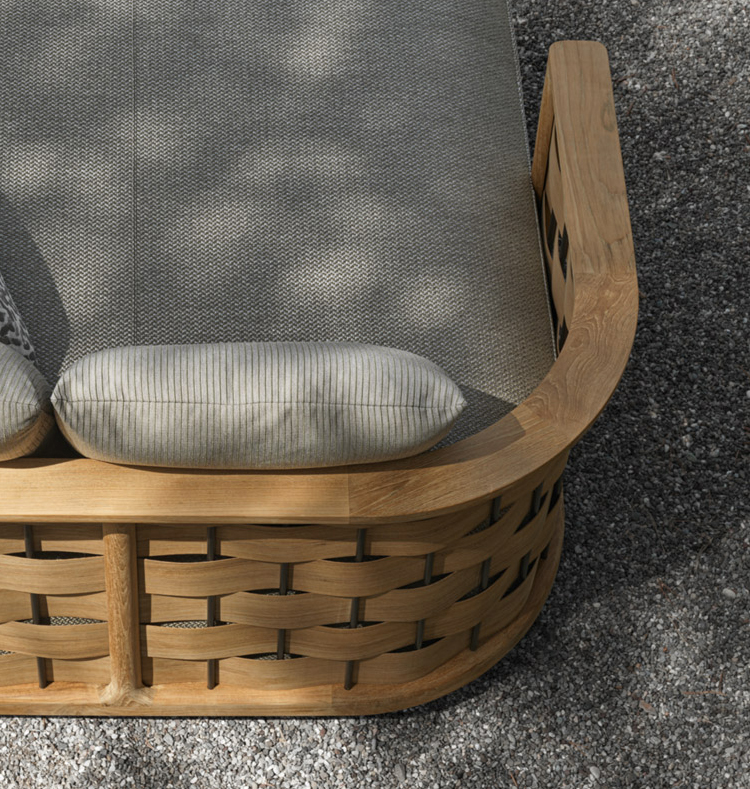 Palinfrasca Sofa | Design Vincent Van Duysen
Palinfrasca Sofa | Design Vincent Van Duysen
“I was inspired by modernism,” says creative director Vincent Van Duysen, “to recall the idea of permeability and transparency between indoor and outdoor spaces, and that intimate connection with light and nature.”
The new Landmark and Timeout outdoor collections feature new works by Van Duysen, his reinterpretation of Luca Meda’s 1994 Palinfrasca sofa and armchair, for instance, as well as outdoor versions of classics by Gio Ponti, Ron Gilad and Foster + Partners.
The Landmark collection is characterised by the use of solid teak. Its Palinfrasca chairs and sofa have a curved, enveloping backrest that seems to echo those of the natural world. In this, it echoes a long design tradition. Exterior furniture has often aspired to resemble nature, with organic materials and forms.
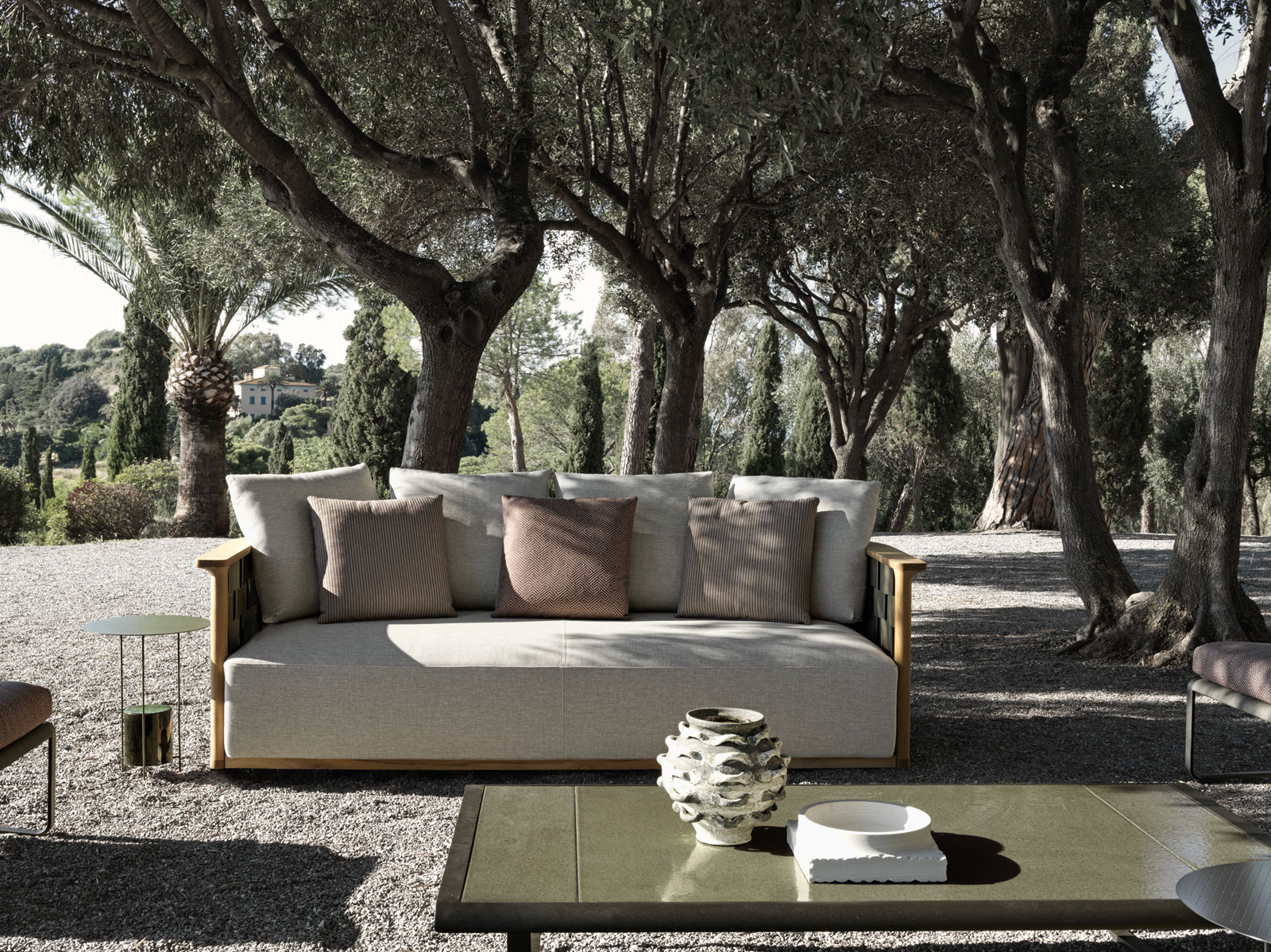 Palinfrasca Sofa | Design Vincent Van Duysen
Palinfrasca Sofa | Design Vincent Van Duysen
Mediaeval nobles lounged on turf chairs, whose seats were made of actual soil and grass. In the 19th Century, cast-iron was shaped into ornamental botanical forms, while postwar American designer Walter Lamb even used nautical rope for his chairs, lending them an air of adventure. Molteni&C’s outdoor textiles, curated by designer Marta Ferri, subtly update this tradition by drawing on the warm colours of Mediterranean earth, olive groves and coastal vegetation.
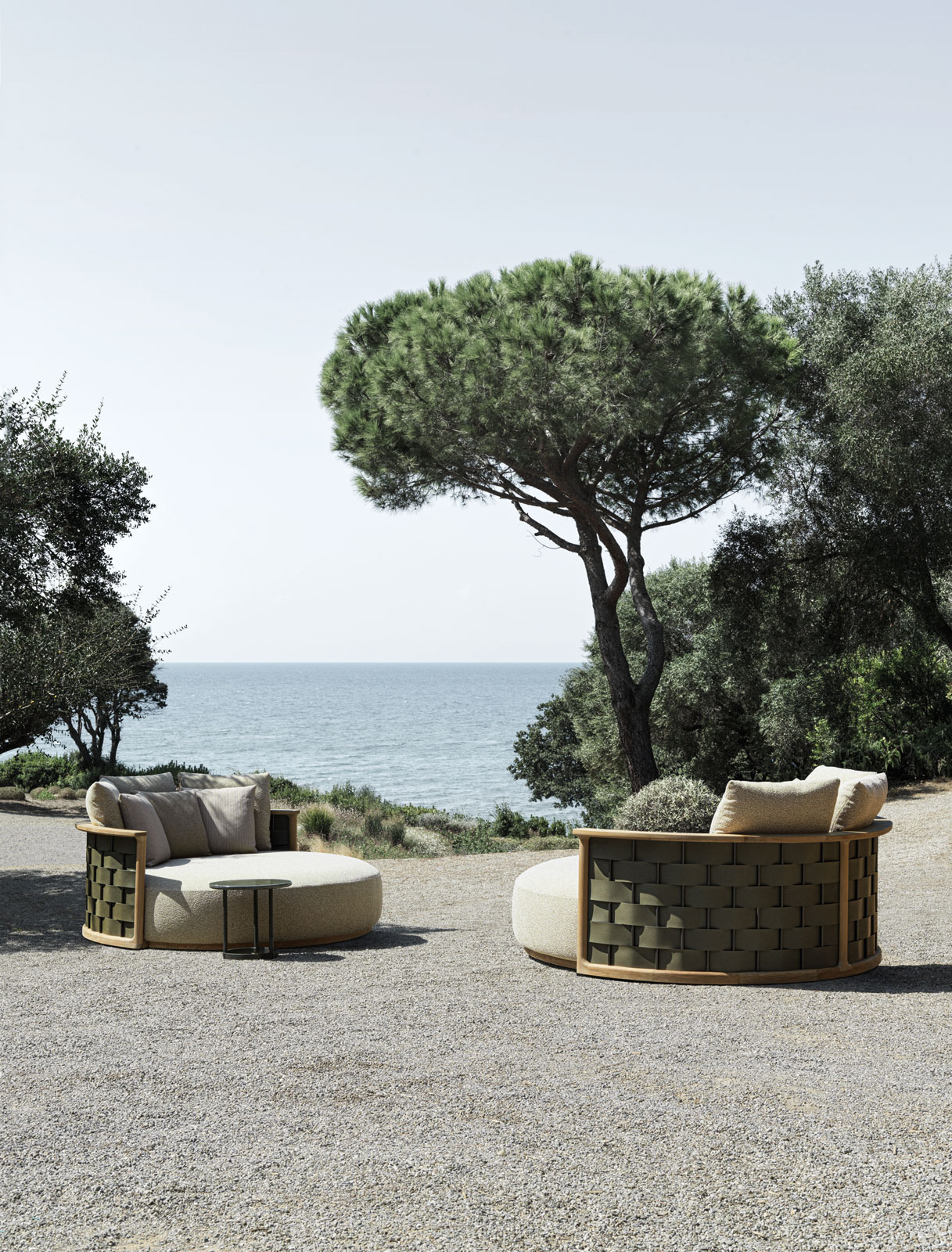 Palinfrasca Sofa | Design Vincent Van Duysen
Palinfrasca Sofa | Design Vincent Van Duysen
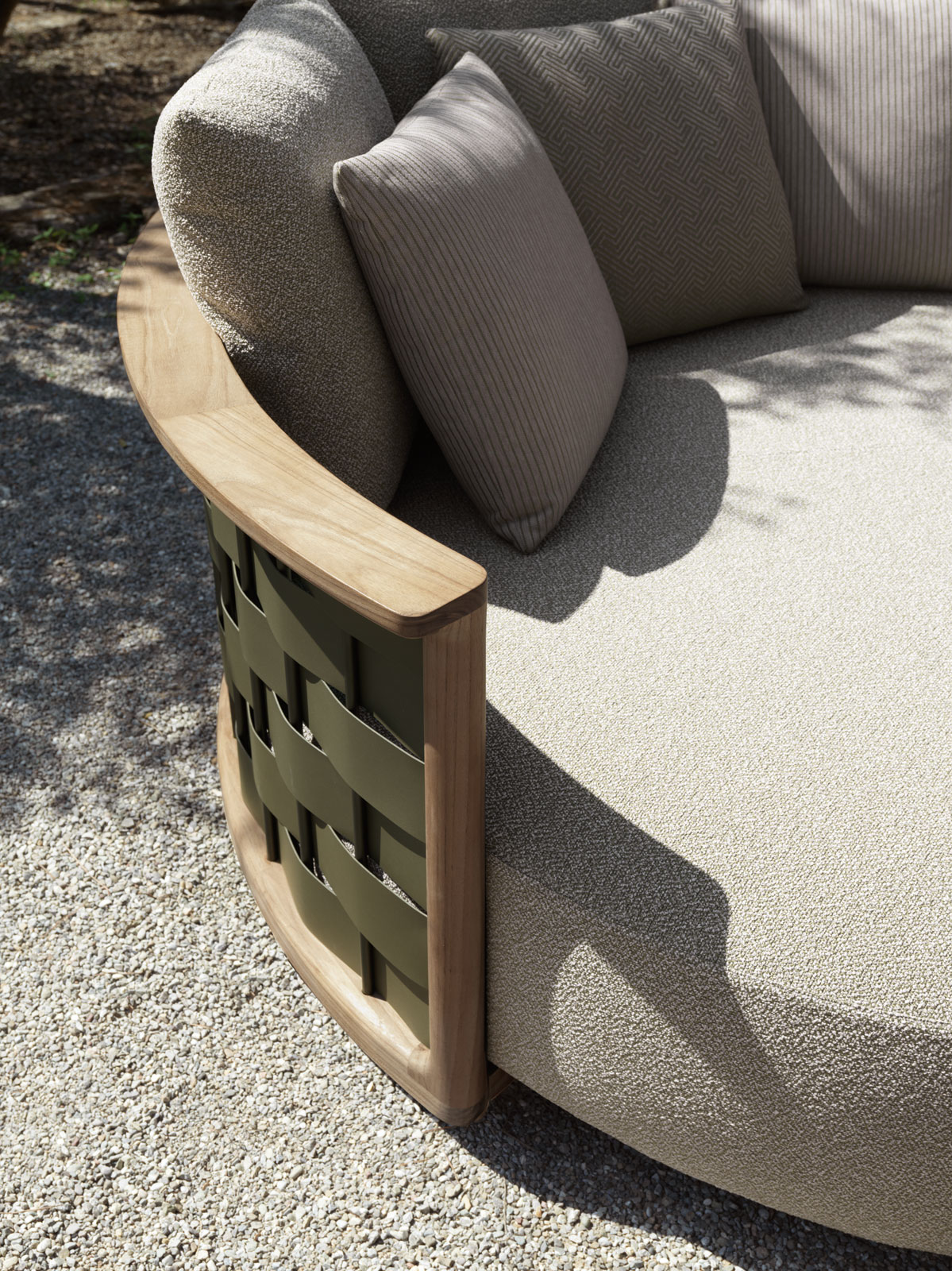 Palinfrasca Sofa | Design Vincent Van Duysen
Palinfrasca Sofa | Design Vincent Van Duysen
Today, outdoor furniture is crafted within an enormous variety of styles. But there are some traits that remain evergreen. Outdoor furnishings are valued for their durability, heat resistance and portability, such that they can be moved as the sun changes position or to shelter from storms. This gives outdoor furnishings a flexible, adaptable aspect: they can be easily reoriented to create different views, arrangements and effects. Waterproof items are, for obvious reasons, particularly valued, and the early 20th century designer firm Salterini was particularly renowned for its “Neva-Rust pieces”.
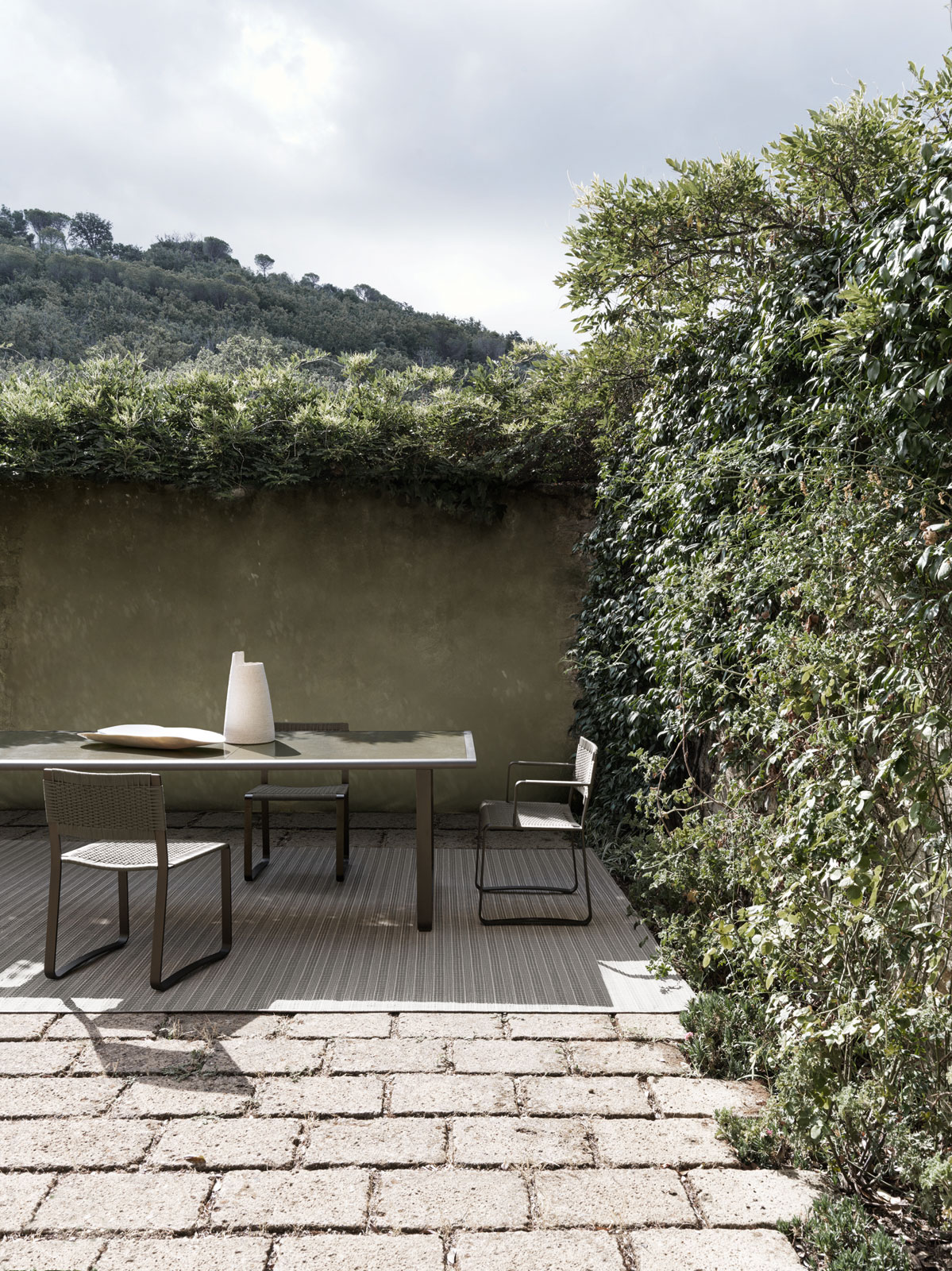 Golde Gate Table | Design Vincent Van Duysen
Golde Gate Table | Design Vincent Van Duysen
Products in Molteni&C’s Timeout collection — which is characterised by the use of burnished painted aluminium — demonstrates all the necessary resilience to survive outdoors. The Golden Gate table, for instance, has a slatted top for water drainage.
More recently, the ability to connect to electricity outside has opened up myriad possibilities, and Molteni&C's new collections are accompanied by something remarkable – an outdoor kitchen. The Helios, designed by creative director Vincent Van Duysen, brings an activity traditionally done inside to the great outdoors, resisting the elements through special covers that are made from a waterproof fabric and which have been treated with an antifungal finish.
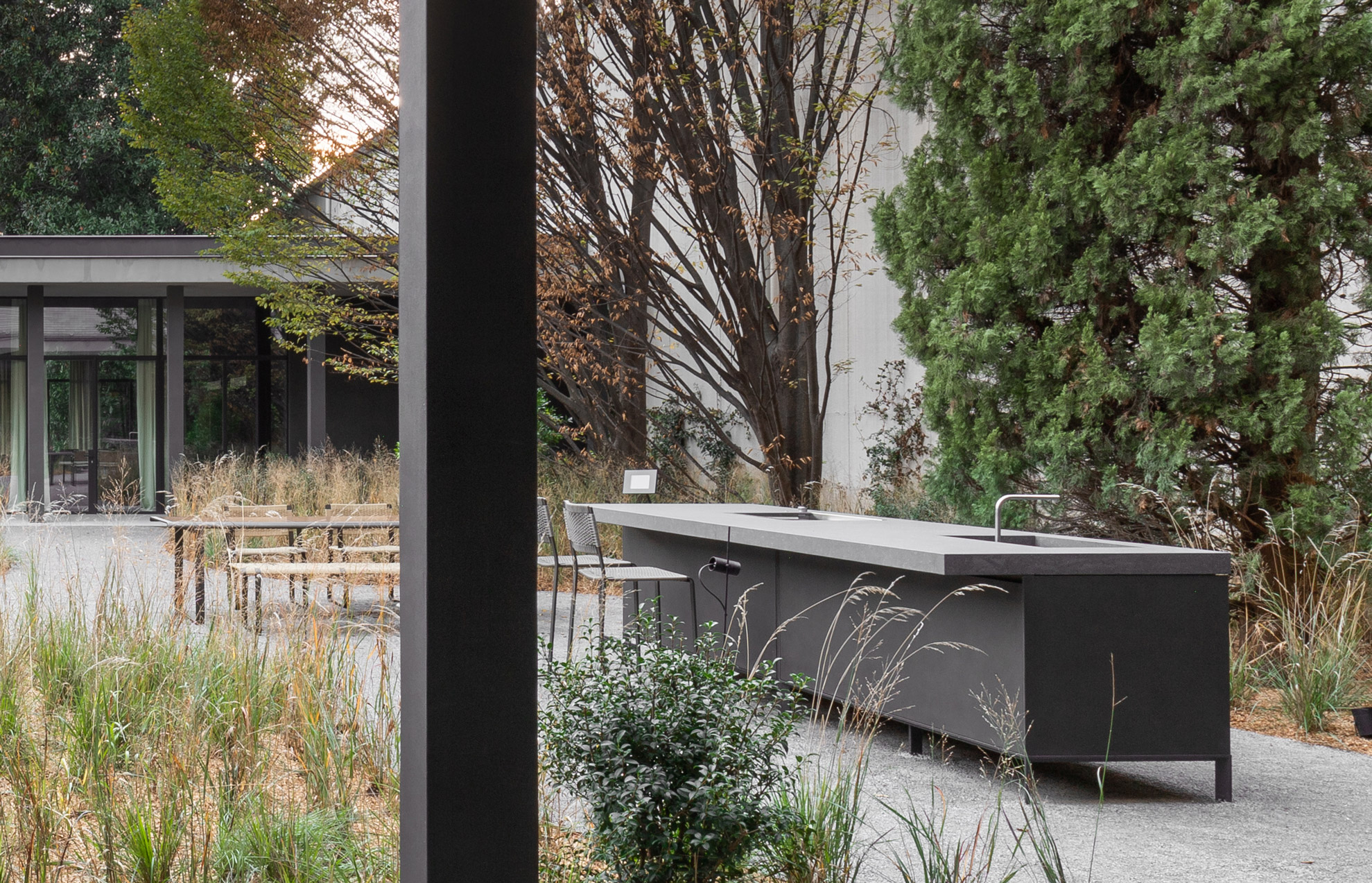
Today, the population of “outdoor rooms" continues to grow. Urbanisation has left many desiring a green lung, a place that offers a break from the asphalt and smog. Outdoor living has become associated with physical and mental health benefits, and architects have recreated accordingly. Many new office buildings are created with courtyards, balconies and gardens. And hospitals and other institutional buildings are often designed with green spots to offer relief from indoor spaces: an impulse many of our ancestors would recognise. But outdoor furniture is far more than a garnish for these spaces. It transforms them into rooms that are just as considered as those we find indoors – they are places where design and the natural world can work together to bring out the best in each other.
Kitchens are everyday spaces that exist to meet an immediate functional goal. When well designed, they are highly calibrated to support the convenient preparation of food.
In the centre of Milan, a short walk from the duomo, is Villa Necchi Campiglio, designed by Piero Portaluppi (1888-1967) for the Necchi Campiglio family between 1932 and 1935.
How we understand the world of design can depend on the means by which we engage with the subject.
Thanks for your registration.